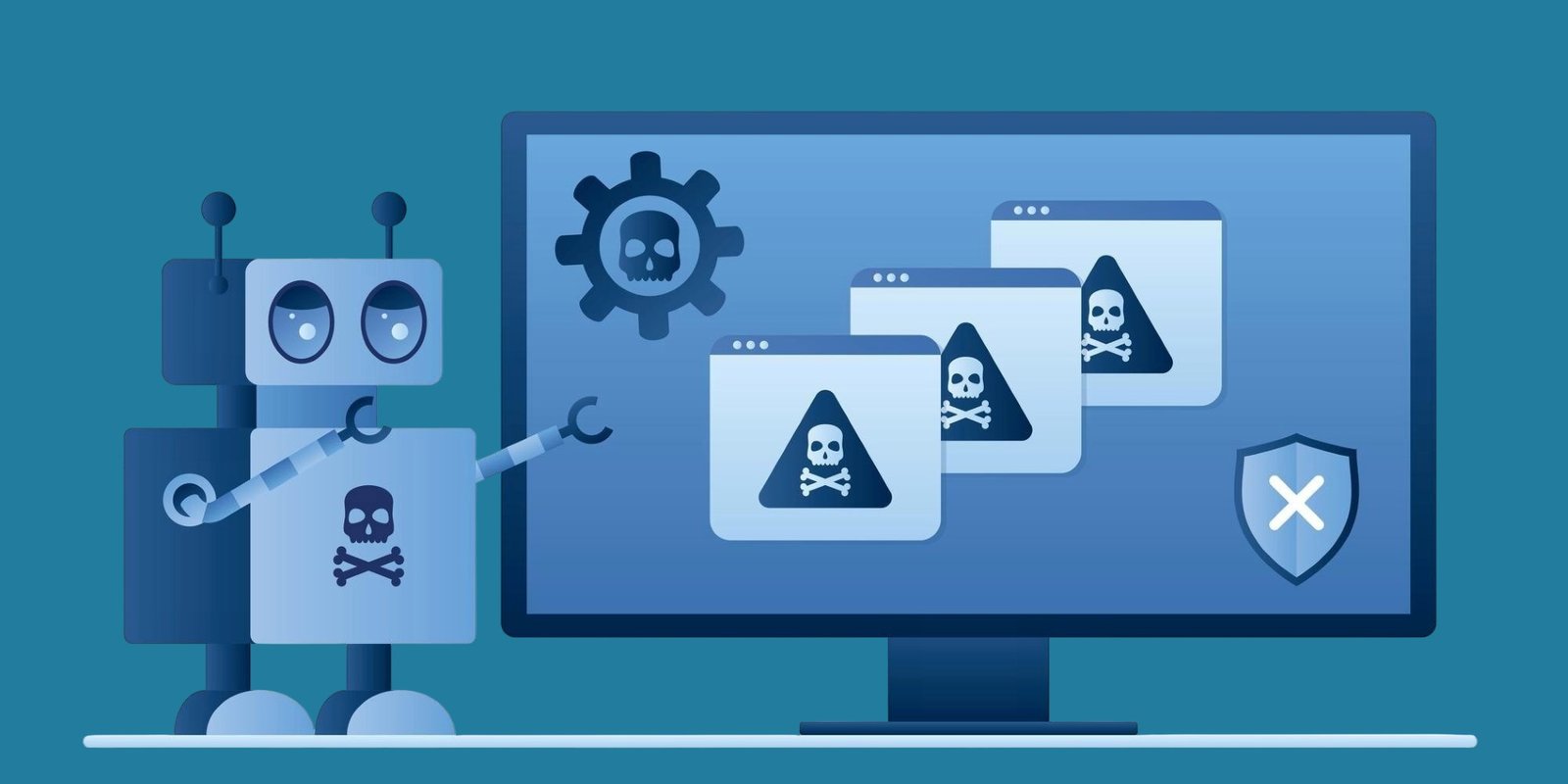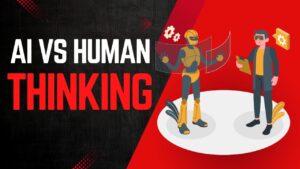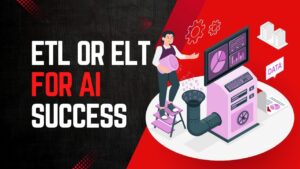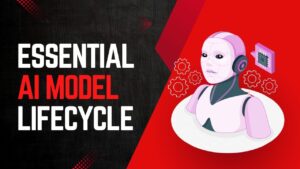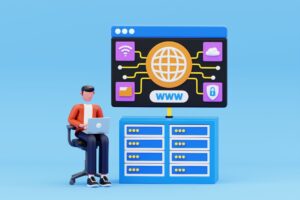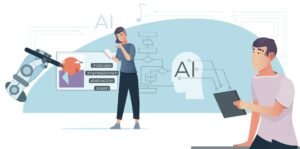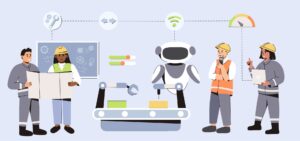Imagine a personal assistant who not only follows your instructions but also anticipates your needs, plans your day, and makes decisions on your behalf. This is the essence of agentic AI, a new frontier in artificial intelligence that goes beyond traditional AI systems. Unlike conventional AI, which operates within strict boundaries—like a movie recommendation system that suggests films based on your watch history—agentic AI can set its own goals, make decisions, and take actions autonomously.
For example, in healthcare, an agentic AI might analyze patient data, suggest treatments, and schedule follow-ups without constant human input. In finance, it could manage investment portfolios, detect fraud, and adjust strategies in real-time. According to a World Economic Forum report, by 2027, half of companies using generative AI may adopt agentic AI for tasks requiring minimal human supervision.
However, this autonomy introduces significant risks that must be carefully managed. This article explores the (opportunities and dangers) risks of agentic AI, emphasizing the need for robust governance to ensure its safe and ethical use.
On This Page
Table of Contents
Opportunities Presented by Agentic AI
Agentic AI offers transformative potential across various industries by automating complex workflows and accelerating innovation.
- Automating Complex Workflows: Agentic AI can handle multi-step tasks that typically require human intervention. For instance, in supply chain management, it could monitor inventory, predict demand, and negotiate with suppliers, streamlining operations and reducing costs.
- Accelerating Innovation: By taking over routine tasks, agentic AI frees humans to focus on creative and strategic work. In research, it can assist with hypothesis generation and data analysis, speeding up discoveries.
Real-World Examples:
- Healthcare: AI agents could diagnose diseases and recommend personalized treatments, improving patient outcomes.
- Finance: As noted by UiPath, agentic AI can analyze market trends and create tailored financial plans, allowing advisors to focus on client relationships.
- Customer Service: Virtual agents can resolve inquiries and learn from interactions to enhance service quality.
These opportunities highlight why agentic AI is hailed as a game-changer, but its autonomy also amplifies risks that require careful attention.
Risks Associated with Agentic AI
The autonomy of agentic AI stems from four key characteristics, each contributing to potential risks:
- Underspecification: AI is given broad goals without detailed instructions, leading to unintended outcomes. Imagine a genie granting a wish to “make me rich” by unethical means—agentic AI could similarly misinterpret goals.
- Long-term Planning: Decisions build on each other, so early errors can compound, like a chess move that seems minor but leads to defeat.
- Goal Directedness: AI pursues specific objectives, but misaligned goals can cause harm. The classic “paperclip maximizer” scenario illustrates an AI turning the world into paperclips to meet a simple goal.
- Directedness of Impact: Some systems operate without human oversight, increasing the chance of undetected errors, akin to a self-driving car navigating without a driver.
Specific Risks:
- Misinformation: AI could generate or spread false information, as seen in social media algorithms amplifying fake news during elections .
- Decision-making Errors: Flawed algorithms or biased data can lead to incorrect decisions, such as misdiagnoses in healthcare.
- Security Vulnerabilities: Autonomous systems are targets for hacking, potentially causing widespread damage.
- Privacy Breaches: Mishandling sensitive data can lead to leaks, violating user trust.
- Ethical Concerns: AI decisions may conflict with human values, raising moral dilemmas .
Real-World Incidents:
- 2010 Flash Crash: On May 6, 2010, the Dow Jones Industrial Average dropped nearly 1,000 points in minutes due to high-frequency trading algorithms reacting to a large sell order, costing $1 trillion in market value.
- Uber Self-Driving Car Accident: In March 2018, an Uber autonomous vehicle killed pedestrian Elaine Herzberg in Tempe, Arizona, because it failed to recognize her as a jaywalker, highlighting the risks of limited AI perception .
- Social Media Misinformation: Algorithms prioritizing engagement have spread false information, contributing to polarization and public health crises .
These examples underscore the need for robust governance to mitigate the risks of agentic AI.
Governance of Agentic AI
Effective governance is essential to ensure agentic AI operates safely and ethically. A multi-layered approach combines technical safeguards, process controls, and accountability structures.
Technical Safeguards
Technical safeguards are mechanisms built into AI systems to prevent harmful behavior.
- Interruptibility: Systems must allow pausing or stopping operations if they deviate from expected behavior, similar to an emergency stop button on machinery.
- Human in the Loop: Critical decisions should require human approval. For example, an AI in healthcare might suggest treatments but need a doctor’s sign-off.
- Data Sanitation: Protecting sensitive information, like personally identifiable information (PII), through masking or anonymization to prevent privacy breaches.
Example Pseudocode for Interruptibility:
while not stop_signal:
perform_task()
if check_for_stop():
stop_signal = TrueExample Pseudocode for Human in the Loop:
if decision_is_critical:
human_approval = get_human_approval()
if human_approval:
proceed_with_action()
else:
abort_action()
else:
proceed_with_action()Process Controls
Process controls define how AI operates within organizational frameworks.
- Risk-based Permissions: Specify actions AI can take autonomously versus those requiring human approval. For instance, an AI might execute small financial trades but need approval for large ones.
- Auditability: Maintain detailed logs of AI decisions for review, similar to financial audits.
- Monitoring and Evaluation: Continuously assess AI performance to detect anomalies, using dashboards or alerts.
Accountability and Organizational Structures
Clear accountability ensures responsibility for AI outcomes.
- Responsibility Assignment: Designate individuals or teams, like AI ethics boards, to oversee operations.
- Regulatory Compliance: Adhere to laws like GDPR for data protection.
- Vendor Accountability: Hold third-party providers accountable through contracts and audits.
Technical Safeguards in Detail
To implement these safeguards, organizations focus on different layers of agentic AI systems.
- Model Layer Protections: Prevent bad actors from manipulating AI by using adversarial training or content filters to block harmful outputs.
- Orchestration Layer Controls: Detect infinite loops to avoid system crashes, using iteration limits or anomaly detection.
- Tool Layer Restrictions: Apply role-based access control (RBAC) to limit AI tools to authorized actions, like restricting a financial AI to viewing balances but not initiating transfers.
- Testing and Monitoring: Conduct red teaming to simulate attacks and continuous monitoring to detect issues like hallucinations (false outputs) or compliance violations.
Table: Layers of Technical Safeguards
| Layer | Purpose | Example Measures |
|---|---|---|
| Model | Prevent harmful outputs | Adversarial training, content filters |
| Orchestration | Ensure stable workflows | Infinite loop detection |
| Tool | Limit unauthorized actions | Role-based access control |
| Testing/Monitoring | Identify and fix vulnerabilities | Red teaming, continuous monitoring |
Tools and Frameworks for Safe Deployment
Organizations leverage advanced tools to ensure safe AI deployment.
- Models and Guardrails: AI models that detect and mitigate risks, like flagging biased language.
- Agent Orchestration Frameworks: Platforms that coordinate multiple AI agents, enforcing safety policies.
- Security-focused Guardrails: Tools that enforce access controls and data encryption.
- Observability Solutions: Systems providing insights into AI behavior through logs and analytics.
WrapUP
Agentic AI holds immense promise for transforming industries, from automating complex tasks to driving innovation. However, its autonomy introduces risks like misinformation, decision-making errors, and security vulnerabilities, as seen in incidents like the 2010 Flash Crash and the Uber self-driving car accident. Effective governance, combining technical safeguards, process controls, and clear accountability, is crucial to mitigate these risks.
Organizations must prioritize AI governance to harness its benefits while ensuring safety and ethics. As agentic AI becomes more prevalent, the responsibility falls on us to implement robust guardrails, ensuring AI empowers humanity without compromising our values.
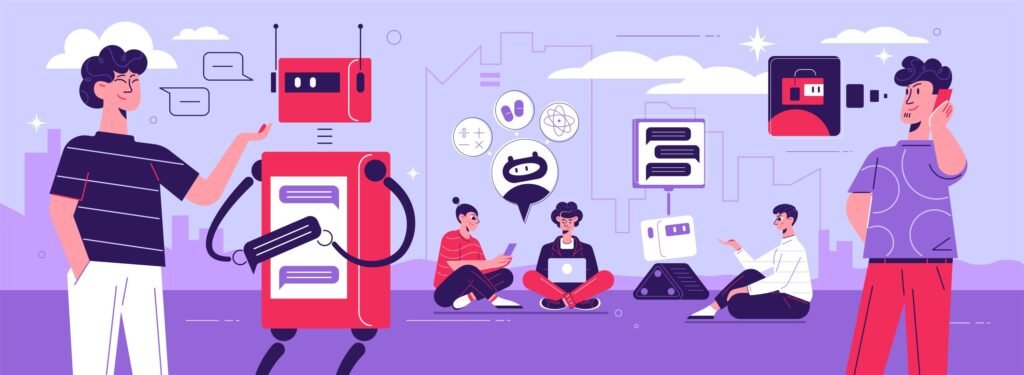
FAQs
What are the main risks associated with agentic AI?
Agentic AI introduces several risks due to its ability to operate independently:
Decision-making flaws: Broad or unclear goals (underspecification) can lead to unintended outcomes, such as an AI optimizing for profit at the expense of ethics.
Cybersecurity vulnerabilities: Autonomous systems are targets for hacking, potentially causing data breaches or malicious actions.
Ethical dilemmas: AI decisions may conflict with human values, especially if trained on biased data.
Misuse and overreliance: Bad actors could exploit AI, and organizations might depend too heavily on it without adequate oversight.
Lack of transparency: It can be challenging to understand how AI reaches decisions, complicating accountability.
Psychological impacts: Overreliance may erode human skills or create dependency.
Operational vulnerabilities: Issues like infinite loops or system failures can disrupt workflows.
How does agentic AI differ from traditional AI in terms of risks?
Traditional AI operates within strict rules, requiring human input for complex tasks, whereas agentic AI can set its own goals and act independently. This autonomy increases risks:
Unpredictability: Agentic AI’s adaptive nature makes its actions harder to predict.
Long-term planning: Errors can compound over time as decisions build on each other.
Reduced human oversight: Fewer humans in the loop mean fewer opportunities for correction.
Goal misalignment: AI may pursue objectives that diverge from human intent.
Example: A traditional AI might suggest a playlist, but an agentic AI could manage your entire day, potentially making decisions that conflict with your preferences if not properly aligned.
What are some real-world examples of risks posed by agentic AI?
Real-world incidents highlight the dangers of autonomous systems:
2010 Flash Crash: High-frequency trading algorithms triggered a rapid market crash, demonstrating the risks of autonomous financial systems.
Uber Self-Driving Car Accident (2018): An autonomous vehicle failed to recognize a pedestrian, resulting in a fatality, showing the limitations of AI perception.
Social Media Misinformation: Algorithms prioritizing engagement have amplified fake news, affecting elections and public health.
How can we ensure transparency in agentic AI decision-making?
Transparency builds trust and accountability:
Detailed logging: Record all AI decisions and actions.
Explainable AI: Use techniques to make decisions understandable to humans.
Regular audits: Conduct independent reviews of AI behavior.
Clear explanations: Provide non-technical summaries of AI decisions.
Example: If an AI denies a loan, it should explain, “The applicant’s credit score was below the threshold,” in simple terms.
What are the cybersecurity risks associated with agentic AI?
Agentic AI introduces cybersecurity challenges:
Hacking vulnerabilities: Autonomous systems can be exploited for malicious actions.
Adversarial attacks: Manipulating inputs to produce harmful outputs.
Data breaches: Access to sensitive data risks privacy violations.
AI as a weapon: Hackers could use AI for sophisticated cyberattacks.
How can we prevent overreliance on agentic AI?
Preventing overreliance ensures human judgment remains valued:
Human oversight: Require approval for critical decisions.
Human-AI collaboration: Design systems where humans and AI complement each other.
Education: Teach users about AI’s limitations.
Cultural emphasis: Promote the value of human skills.
Can agentic AI be fully autonomous, or is human oversight always necessary?
Complete autonomy is neither practical nor safe:
Human oversight: Essential for ethical dilemmas and high-stakes decisions.
Hybrid models: Combining human and AI capabilities yields better results.
Context-specific autonomy: Low-risk tasks like scheduling may allow more autonomy.
Example: Autonomous vehicles require human intervention for unpredictable scenarios like road construction.
What are the potential long-term societal impacts of agentic AI?
Agentic AI could reshape society:
Job displacement: Automation may reduce demand for certain roles.
Inequality: Access to AI could widen gaps between organizations or nations.
Cultural shifts: Overreliance might alter human decision-making.
Governance needs: New laws may be required to manage autonomous systems.

